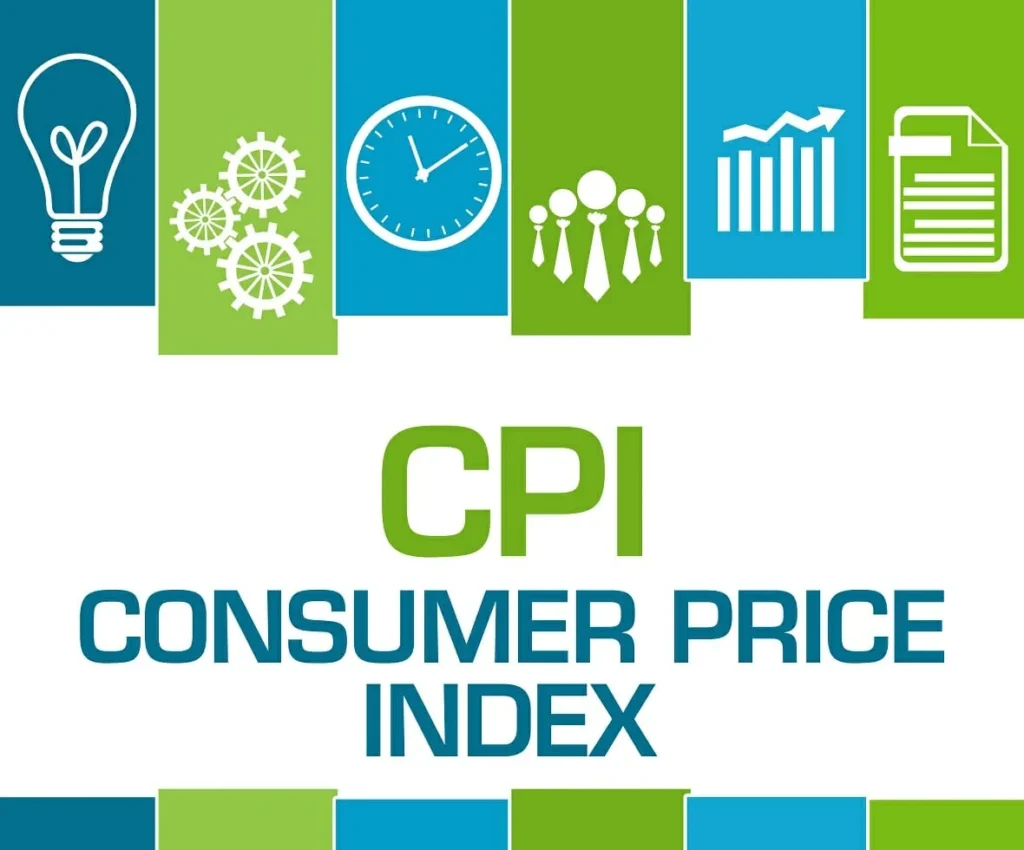Understanding the Consumer Price Index (CPI): a complete guide to inflation and economic health
Have you ever found yourself pondering the ever-changing prices of everyday essentials such as groceries, rent, and even that comforting daily cup of coffee? If so, you are not alone. Many people experience the impact of these price fluctuations on their wallets. Step into the intricate world of economic indicators, where the consumer price index undeniably reigns supreme. As a crucial economic barometer, the CPI is not just a mere statistic; it significantly influences a myriad of factors, ranging from your household budget to overarching national economic policies.
In this comprehensive guide, you will explore the multifaceted nature of the consumer price index, as we break down its definition, importance, calculation methods, and essential components. Furthermore, we will delve into the various types of consumer price index their applications, and the inherent limitations that come with them. Comparisons with other economic measures will also be made to provide a broader context, and we will examine recent trends that have emerged in this field. By the end of this exploration, you will gain a deeper understanding of how the consumer price index affects both individual consumers and the economy as a whole.

Definition of Consumer Price Index
The Consumer Price Index serves as a vital statistical tool specifically designed to quantify and track changes in the average prices of goods and services that consumers acquire over time. In essence, it is a calculated approximation, meticulously based on regularly gathered price data from a thoughtfully chosen sample of items, which represents the consumption habits of the average consumer. The primary goal of the consumer price index is to measure inflation effectively and to provide a clear and comprehensive picture of the cost of living, allowing individuals and policymakers to make informed decisions.
Since its establishment in the early 20th century, the consumer price index has undergone significant evolution, adapting to shifts in consumer behaviors, market trends, and economic circumstances. For instance, as consumer preferences change, the index updates to reflect new products and services, ensuring its relevance in today’s dynamic marketplace. Consequently, the consumer price index plays an essential role not only in economic analysis but also in social policy, as it influences everything from wage negotiations to government benefits. Thus, understanding the CPI is crucial for grasping the broader economic landscape and its impact on daily life.
Importance and usage of CPI

The Consumer Price Index holds great importance for several compelling reasons that resonate across various sectors of society. Economists, policymakers, and the general public widely utilize it to comprehend inflationary trends and make informed decisions based on economic realities. By serving as a reliable indicator of price changes, the consumer price index assists in adjusting wages, pensions, and social security benefits, thereby ensuring that these financial supports keep pace with the rising cost of living that many individuals experience.
Furthermore, the consumer price index plays a crucial role in shaping economic policy by influencing interest rate decisions made by central banks. For example, when the consumer price indexindicates rising inflation, central banks may respond by increasing interest rates to stabilize the economy. This relationship illustrates how the consumer price index is not merely a statistical measure but a pivotal element in the formulation of government policies concerning taxation and social welfare programs. Therefore, a thorough understanding of the consumer price index is essential for grasping its wide-ranging implications, as it significantly affects economic stability and individual financial well-being.
Calculation of Consumer Price Index
Calculating the Consumer Price Index involves a detailed and systematic process that is crucial for ensuring its accuracy and reliability. Data collectors gather prices of various goods and services from numerous retail locations spread across the country as a critical component of this process. This extensive survey methodology ensures that researchers select a representative sample of items, effectively reflecting the spending habits of households from diverse backgrounds and regions.
Once the data collectors gather the data, they assign weights to various items based on their relative importance in the average consumer’s budget during the weighting process.
This means that more frequently purchased items, such as food and housing, carry greater weight in the index compared to less commonly purchased goods.After analysts complete this weighting, they employ index formulas, such as the Laspeyres formula, to aggregate these weighted prices and produce the overall consumer price index. This systematic approach not only enhances the precision of the consumer price index but also ensures that it accurately captures the economic realities faced by consumers, making it an essential tool for economic analysis and policy formulation.
4o mini
Components of the Consumer Price Index
The Consumer Price Index basket comprises a diverse array of goods and services that represent typical consumer spending patterns.Researchers thoughtfully organize these items into major groups, which include housing, transportation, food and beverages, medical care, recreation, education, and communication. They assign each category a distinct weight in the consumer price index, reflecting its proportional share of the average consumer’s spending.This weighting system is crucial, as it ensures that more significant expenditures have a greater impact on the overall index, thereby providing a more accurate depiction of changes in the cost of living.
However, researchers deliberately exclude certain items, such as income taxes and investment products like stocks and bonds, from the consumer price index basket. This exclusion is based on the rationale that these items do not represent direct consumption by households in the same way that goods and services do. Consequently, the consumer price index focuses solely on the prices of goods and services that consumers typically purchase, allowing it to serve as a reliable measure of inflation and cost-of-living changes. By understanding the composition of the consumer price indexbasket and its exclusions, one can appreciate how the index aims to provide a clear picture of economic conditions affecting everyday consumers.

Types of Consumer Price Index
The Consumer Price Index is a vital economic indicator that measures the average change in prices over time for a basket of goods and services commonly purchased by households. Different versions of the CPI are designed to cater to various analytical needs. The two most common types are:
Consumer Price Index for all urban consumers (CPI-U)
The CPI-U represents the spending habits of the urban population, constituting about 88% of the total population. It is the most comprehensive measure of inflation and is widely used by policymakers, businesses, and individuals to track changes in the cost of living. The CPI-U includes a broad range of goods and services, such as food, housing, transportation, medical care, education, and entertainment.
Consumer Price Index for urban wage earners and clerical workers (CPI-W)
The CPI-W focuses on households of wage earners and clerical workers, representing a narrower demographic group. It is used to measure inflation’s impact on this specific population group, which generally has lower incomes than the overall urban population. The CPI-W includes a similar basket of goods and services to the CPI-U but may have different weights assigned to reflect the spending patterns of wage earners and clerical workers.
Other types of Consumer Price Index.
In addition to the CPI-U and CPI-W, there are several other versions of the CPI that target specific population groups or geographic areas. These include:
- Consumer Price Index for All Urban Consumers: Food and Energy (CPI-U-FE): This index excludes the volatile food and energy components from the CPI-U to provide a measure of underlying inflation.
- Consumer Price Index for Urban Wage Earners and Clerical Workers: Food and Energy (CPI-W-FE): Similar to the CPI-U-FE, this index excludes food and energy from the CPI-W.
- Consumer Price Index for the Elderly (CPI-E): This index measures the inflation experienced by households headed by people aged 62 and over. It includes a higher weight for goods and services typically consumed by older adults, such as healthcare and prescription drugs.
- Regional CPI: Various CPI measures exist for different regions in the United States, including the South, Northeast, Midwest, and West. Each of these indices measures inflation in their respective geographic areas.
These various versions of the CPI provide valuable insights into inflation’s impact on different population groups and geographic areas. They are used by policymakers, businesses, and individuals to make informed decisions about economic policies, wage negotiations, and personal finances.
Applications of Consumer Price Index
The Consumer Price Index serves as the primary tool for measuring inflation, playing a pivotal role in the economic landscape. It quantitatively determines the pace at which the general price level of goods and services rises over a specified period of time. By meticulously tracking changes in the CPI, we can gain valuable insights into how inflation affects the cost of living for consumers. This understanding is crucial, as it directly impacts purchasing power and financial planning for individuals and families alike.
Additionally, the CPI is instrumental in adjusting salaries, pensions, and social security benefits, ensuring that these payments keep pace with inflationary pressures. This adjustment is vital for maintaining the standard of living for recipients, particularly in times of rising prices. Moreover, the CPI is not only a measure of inflation; it also serves as a critical input for various economic indicators and policy applications. For instance, it influences interest rates and monetary policy decisions made by central banks, as policymakers rely on CPI data to gauge the economic environment and determine appropriate responses. In this way, the CPI transcends its role as a mere statistic, becoming a fundamental element in the formulation of economic strategies that affect both individuals and the broader economy.
Limitations of Consumer Price Index
Despite its widespread use and significance, the Consumer Price Index has certain limitations and potential biases that merit attention. One common issue is known as substitution bias. This phenomenon occurs when consumers alter their purchasing habits in response to price changes; however, the CPI basket may not accurately reflect these substitutions. For example, if the price of beef rises significantly, consumers might switch to purchasing chicken instead. If the CPI does not account for this shift, it may overstate the true cost of living experienced by households.
Another challenge is related to quality adjustments. Changes in the quality of goods and services can significantly impact prices, and failing to adjust for these quality variations can lead to inaccuracies in the CPI. For instance, if a new smartphone model is released at a higher price but includes enhanced features and performance, it can be difficult to determine whether the increase in price is justified by the improvements in quality.
Additionally, the CPI’s emphasis on urban areas may lead to a lack of representation of price fluctuations in rural regions. This geographic focus could potentially limit the scope and accuracy of the analysis, as price changes experienced by rural consumers might differ from those in urban settings. These factors contribute to criticisms and misunderstandings about the accuracy and relevance of the CPI, making it essential for users to be aware of its limitations when interpreting inflation data and its implications for economic policy.
Comparisons with other measures
In evaluating inflation, the Consumer Price Index is frequently juxtaposed with alternative measures such as the Producer Price Index (PPI) and the GDP deflator. While the CPI measures changes in consumer prices, the PPI tracks prices at the wholesale level, reflecting the cost of goods and services before they reach consumers. On the other hand, the GDP deflator measures price changes in the overall economy, including goods and services produced domestically. International comparisons reveal differences in CPI methodologies between countries, highlighting the need for standardized approaches to inflation measurement.
Recent changes and trends
The CPI is not static; it undergoes periodic updates to reflect changing consumer behaviors and economic conditions. Recent CPI figures show inflation trends and provide insights into financial health. Updates in CPI calculation methods, such as improvements in data collection and weighting techniques, ensure that the index remains relevant and accurate. Staying informed about these changes helps individuals and policymakers make better financial and economic decisions.
FAQs
What is the Consumer Price Index?
The Consumer Price Index is a crucial economic indicator that provides insights into inflation and the cost of living. This metric evaluates the temporal variation in prices paid by consumers for a collection of goods and services, facilitating an assessment of inflation’s impact on diverse economic sectors.
How is the CPI calculated?
Researchers collect prices of various goods and services from different retail locations nationwide to calculate the CPI. They then weight these prices based on their importance in the average consumer’s budget and use specific index formulas to aggregate them and produce the overall CPI.
Why is the CPI important?
The CPI is important because it helps economists, policymakers, and the public understand inflation and make informed decisions. It adjusts wages, pensions, and social security benefits and influences economic policies, including interest rates and taxation.
What are the different types of CPI?
The two most common types of CPI are:
- CPI for All Urban Consumers (CPI-U): This represents the spending habits of the urban population.
- CPI for Urban Wage Earners and Clerical Workers (CPI-W): This focuses on households of wage earners and clerical workers.
What are some limitations of the CPI?
The CPI has several limitations, including:
- Substitution bias: Price changes may cause consumers to change their purchasing habits, which the CPI basket might not fully capture.
- Quality adjustments: Changes in the quality of goods and services can affect prices.
- Urban focus: The CPI primarily reflects urban areas and may not fully capture price changes in rural regions.


